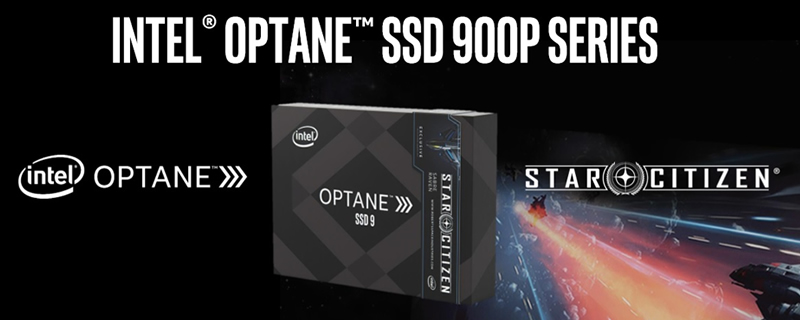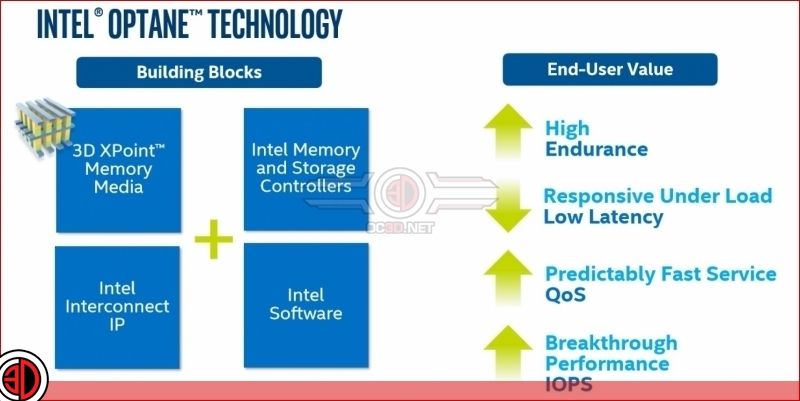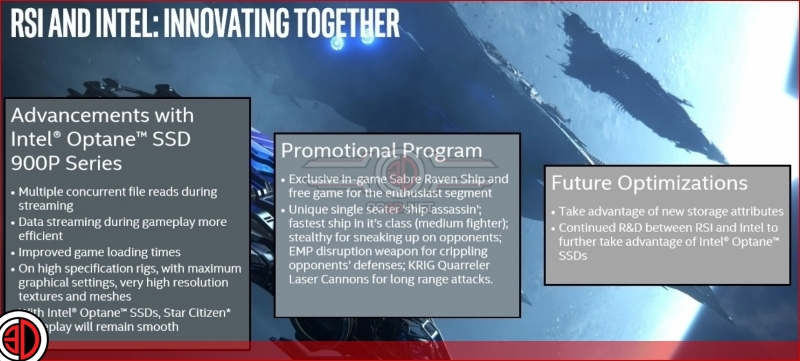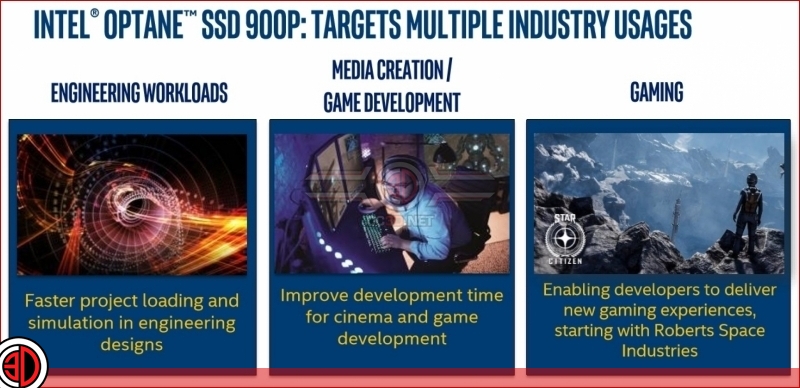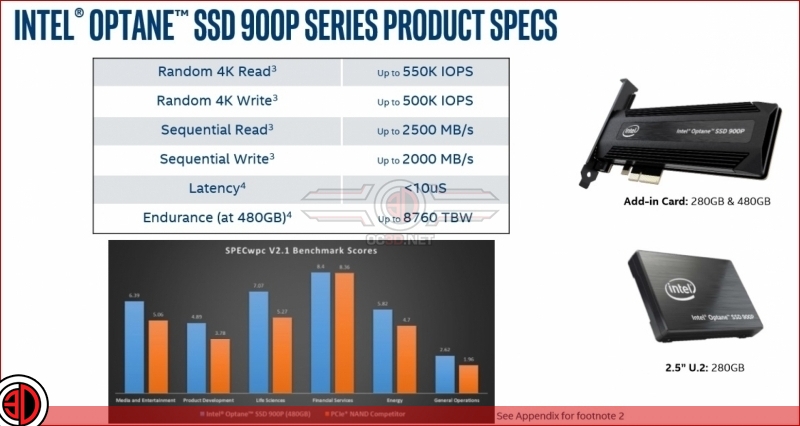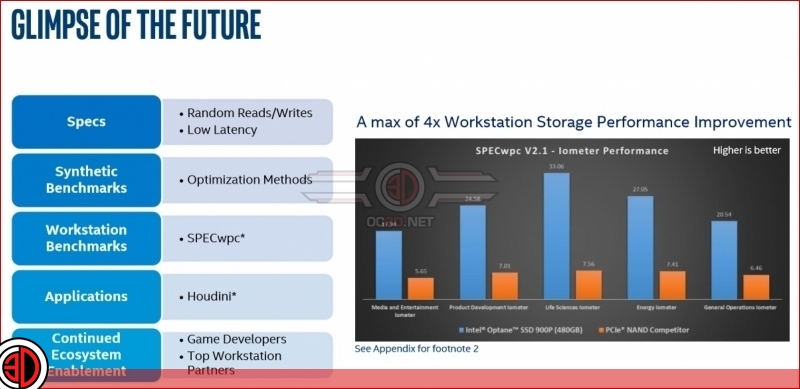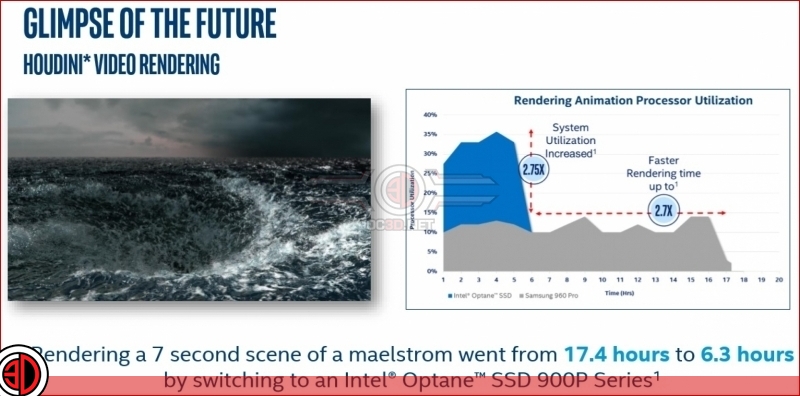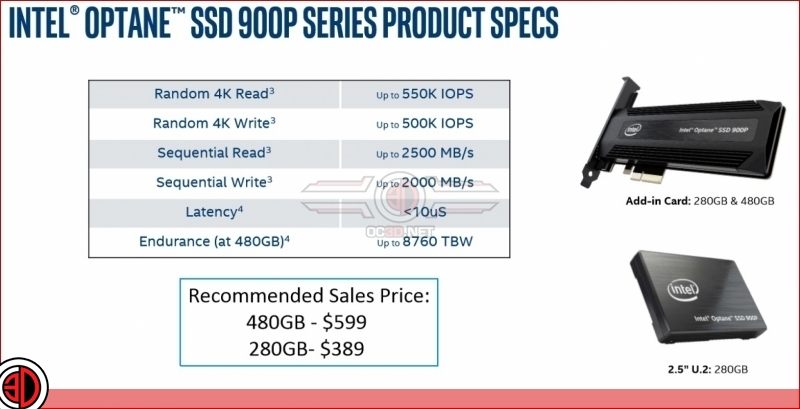Intel releases their new Optane 900P series SSD
Intel releases their new Optane 900P series SSD
Today we will be talking about Intel’s latest SSD, their Optane powered SSD 900p, which makes use of XPoint/Optane memory to offer higher levels of performance at low queue depths, higher levels of endurance and increased responsiveness thanks to its lower latency characteristics.Â
To put things simply, XPoint memory is a transformative new memory type that offers characteristics that sit somewhere between traditional NAND and DRAM, offering non-volatile (doesn’t instantly delete itself when powered down) memory while offering performance that is almost RAMDISK-like.Â
 Â
XPoint memory was announced by Intel and Micron back in 2015, with the new memory type being marketed as the next big evolution in memory performance and reliability. The only problem with this new memory type was its cost, being the new kid on the block with lots of R&D costs to recoup and levels of production that were simply not suitable for mass market products.Â
Until now this has left Optane in a place where it is mostly used in the enterprise market, though it has also recently been delivered to Intel-based systems as a “system accelerator” which acts as a fast caching device to effectively speed up traditional storage devices. These drives were only available in 16GB and 32GB M.2 drives, making them ill-suited for use as an SSD replacement.Â
With the 900p Intel is set to offer consumers Intel’s new Ultra-fast storage in 280GB and 480GB capacities, making it suitable for use in a modern PC system, though the pricing is quite high when it is compared to a standard NVMe SSD.Â
As part of the reveal of Intel’s new SSD 900P, the company revealed that they have been working with Robert Space Industries (RSI) to research the potential use cases of Ultra-fast Optane SSDs, particularly when it comes to creating more realistic game worlds as well as reducing loading times.Â
With an SSD this fast RSI has also needed to work on new technologies to decrease their game’s load times, as the SSD itself in many cases was not the limiting factor when it came to loading their game.Â
Most games these days are designed to be loaded off an HDD (Xbox One/PS4) or a basic NAND setup (Nintendo Switch, MicroSD or Cartridge). If faster storage mediums become more common developers will be able to create games with these faster storage mediums in mind, allowing them to utilise larger datasets for a single level or stream higher resolution assets into a game. Faster storage can do more than just decrease game load times.Â
Â
Intel will be shipping their new Optane 900P SSDs with a free copy of Star Citizen and an exclusive in-game ship called the “Sabre Raven”, a single seater medium fighter that is the “fastest in its class”. Â
Optane is primarily designed for heavy data-oriented workloads, but its high performance at low queue depths and low latencies can be applied well to almost any storage problem.Â
Please go to the next page for the Intel Optane 900P’s specifications and pricing
Specifications and pricing
With their new Optane 900P series of SSDs Intel is aiming to be the best performing SSD on the market, though traditional testing methods may have difficulty highlighting the drive’s performance benefits when compared to its NAND-based competition.Â
Â
In the charts below Intel is comparing their SSD to a “PCIe NAND Competitor”, which is a Samsung 960 Pro, a drive that is currently lauded as one of the best performing SSDs on the market.Â
The problem with a lot of today’s storage benchmarks is that they are designed for NAND and often do not highlight things like low queue depth performance and typically look deep into sequential workloads. This is not really representative of what most users experience, as most PC users will be using low queue depths of between 1 and 10 while most benchmarks focus on a queue depth as high as 32.Â
Intel has conducted their own testing and compared their results to Samsung’s 960 Pro, revealing some huge shortcomings for Samsung’s fastest consumer SSD, showcasing how Intel’s strength at low queue depths and lower latencies allows a lot of different workloads to be accelerated, making an Optane SSD a great choice for productivity depending on your desired workload.Â
Â
Â
Â
Â
One of the workloads Intel used was to render a highly complex video scene that simulates a large whirlpool, which can take up to 17 hours to complete with a 960 Pro. When using the Intel 900p the render was done in around six hours, a render time that is around 2.7 times faster.Â
The sheer speed of Intel’s 900p was able to keep the system running at higher loads for longer, with 2.75x higher system utilisation, allowing the workload to be completed at a much faster rate. This highlights how certain workloads can be limited by SSDs, making Xpoint/Optane a highly attractive storage medium for ultra-high-end media creation and data-centric workloads.Â
Â
Intel will be releasing two capacity options for this SSD at launch, a 280GB version (PCIe and U.2 variants) and a 480GB version (PCIe only). Note that Intel has listed the same performance characteristics for both their 280GB and 480GB versions, as Optane does not suffer from the same parallelism problems as NAND, which often causes smaller drives to offer lower performance numbers than their higher-end counterparts. Â
These new SSDs will start shipping today, which means that these new ultra-enthusiast SSDs should be available at retailers soon.Â
You can join the discussion on Intel’s new Optane 900P series of SSDs on the OC3D Forums.Â



